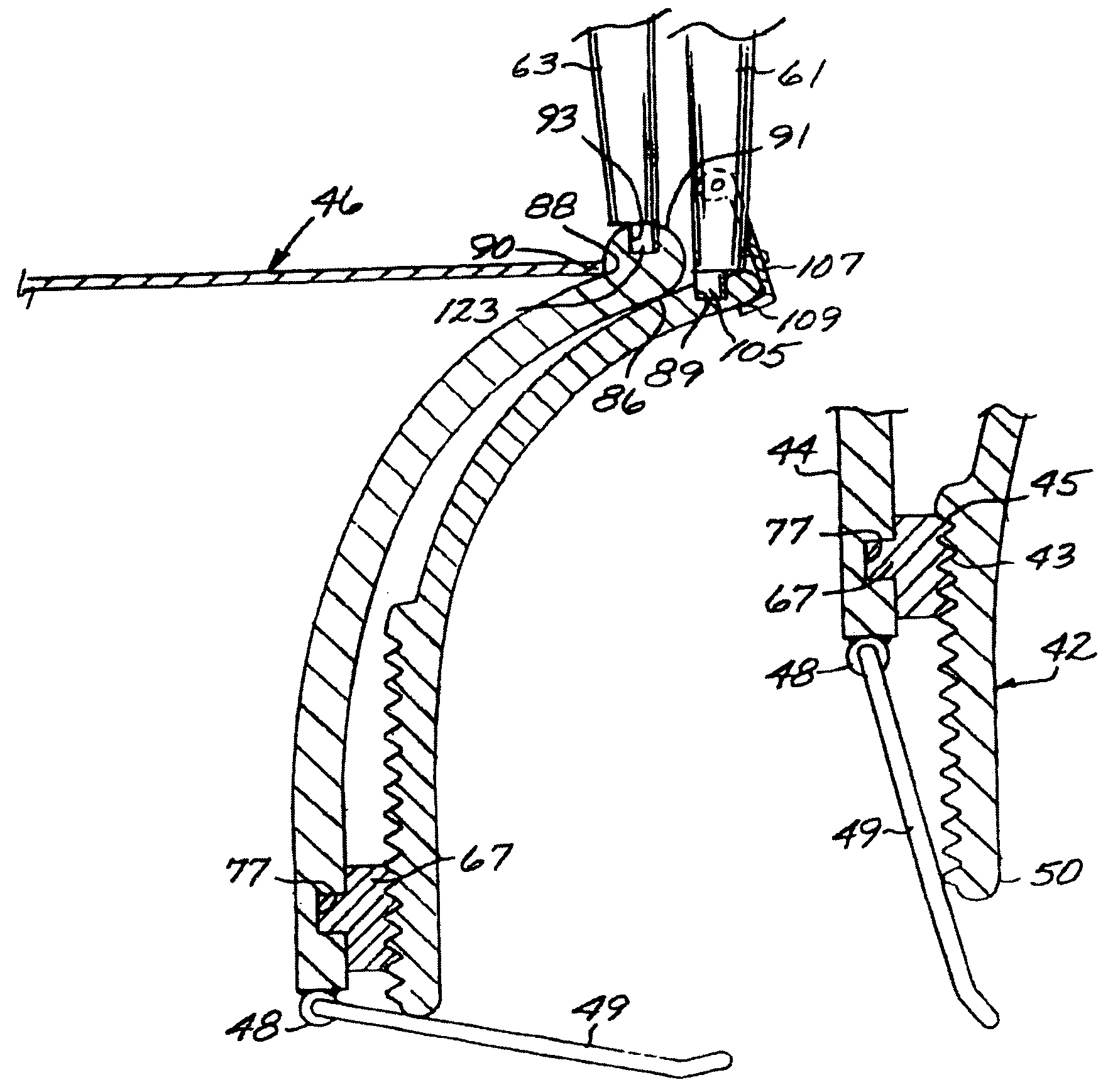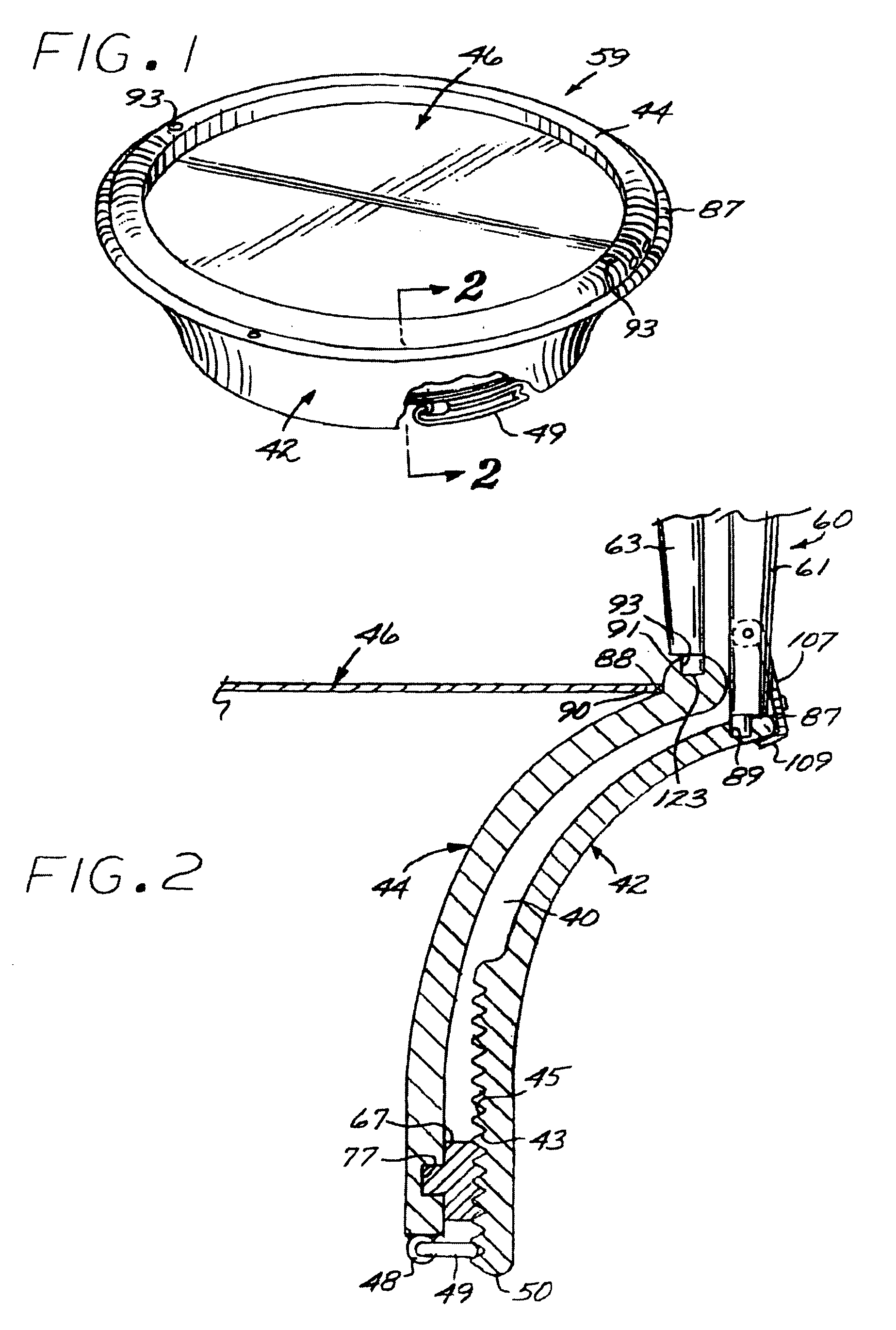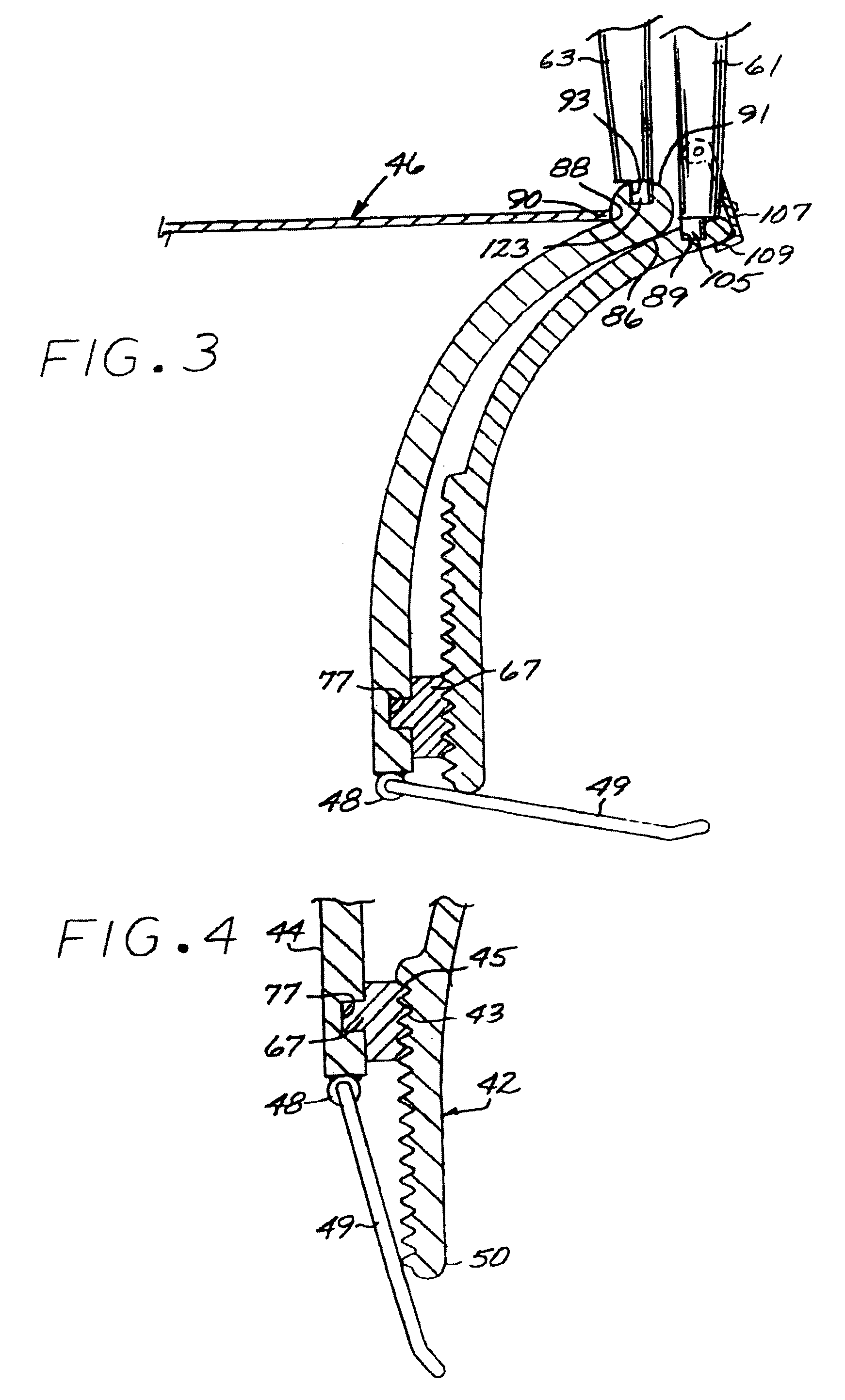Heart valve annulus device and method of using same
a heart valve and annulus technology, applied in the field of prosthetic heart valve anchors, can solve the problems of heart valve damage, needing complete valve replacement, and requiring complete valve replacement, so as to reduce the overall time required, improve the maneuverability, and minimize the time-consuming process of suturing
- Summary
- Abstract
- Description
- Claims
- Application Information
AI Technical Summary
Benefits of technology
Problems solved by technology
Method used
Image
Examples
second embodiment
[0059]Referring to FIGS. 11 through 13, the anchor apparatus of the present invention, shown without the prosthetic valve in place, includes, generally, a ring forming a band 131 having upper and lower ring elements 133 and 135. Interposed between the upper and lower ring elements 133 and 135 is an actuating ring, generally designated 134, configured with diamond shaped fold-inducing openings 137 spaced peripherally thereabout and configured and arranged to form therebetween axial panels 138 having their respective narrowest annular dimension on a circumferential line positioned to be, when the band is compressed axially splayed radially outwardly under the annulus shelf (FIG. 13) to cooperate in defining a retainer ring, generally designated 147. The ring may be constructed of a stressed metal covered with a biocompatible substance, or a semi-rigid plastic capable of a spring memory so that upon deployment, the anchor device will retain the axially shifted configuration without ad...
third embodiment
[0065]the prosthetic valve anchoring device of the present invention shown in FIGS. 16–18 without the prosthetic valve in place, includes a band, generally designated 201, somewhat similar to that shown in FIG. 11. The band 201 is formed with proximal and distal ring elements 203 and 205, respectively, and an actuator ring element 204 interposed between the proximal and distal elements. The distal ring element 205 is constructed with a retainer ring element, generally designated 200, having diamond shaped cut outs 202 spaced annularly apart to form said bands 206 which, when axial forces are applied, will splay radially outwardly to assume a diameter larger than that of the annulus to form an enlarged-in-diameter retainer.
[0066]Mounted about the interior of the proximal band element 203 are a plurality of rectangular latch brackets 207 configured with longitudinal passages. Corresponding elongated resilient latches, generally designated 211, are cantileverly mounted on the distal b...
PUM
 Login to View More
Login to View More Abstract
Description
Claims
Application Information
 Login to View More
Login to View More - R&D
- Intellectual Property
- Life Sciences
- Materials
- Tech Scout
- Unparalleled Data Quality
- Higher Quality Content
- 60% Fewer Hallucinations
Browse by: Latest US Patents, China's latest patents, Technical Efficacy Thesaurus, Application Domain, Technology Topic, Popular Technical Reports.
© 2025 PatSnap. All rights reserved.Legal|Privacy policy|Modern Slavery Act Transparency Statement|Sitemap|About US| Contact US: help@patsnap.com



